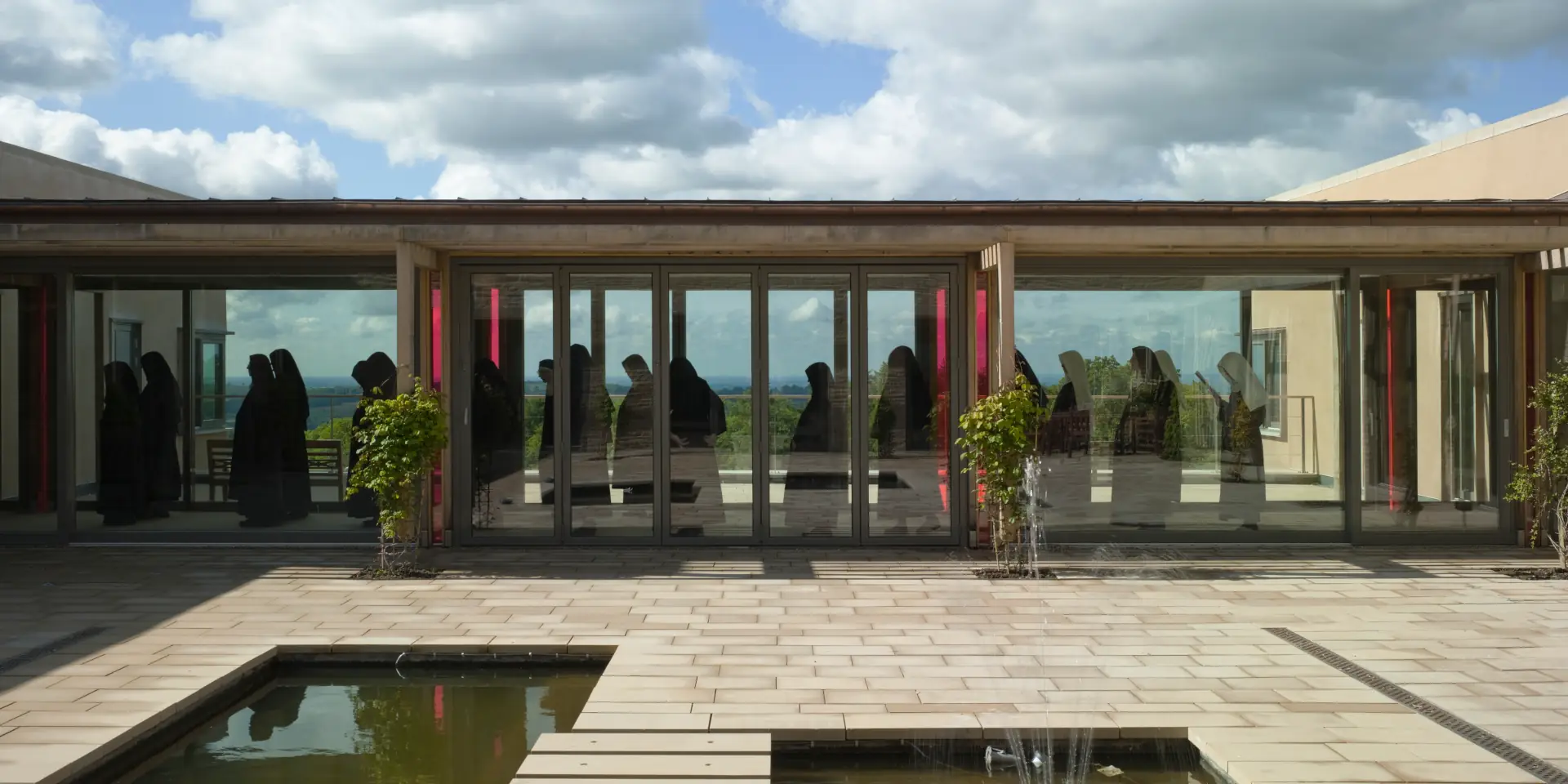Dame Laurentia McLachlan
(1866-1953) b. Lanarkshire, Scotland. d. Worcester, England.
Among the five figures chosen to represent 1000 years of ‘the inspired Christian life’ in Worcester Cathedral’s Window of the Millennium is that of Dame Laurentia McLachlan, abbess of Stanbrook 1931-53. Etched in plain glass, the work defines her habited form clearly, though her grey-green eyes are less well served by the medium. Dame Laurentia’s companions in the window include a Saxon saint (Wulstan), a medieval plough-man (Piers), a seventeenth-century Quaker (Richard Baxter), and an army chaplain from the First World War (Studdert Kennedy) – a range which reflects her wide circle of friends in life and for which she is, perhaps, best known. George Bernard Shaw described her as ‘an enclosed nun with an unenclosed mind’. Her friendships with Shaw and Sir Sydney Cockerell have become known world-wide through Dame Felicitas Corrigan’s tribute, ‘In a Great Tradition’ (1956), and its derivatives for stage and screen, notably, Hugh Whitemore’s ‘The Best of Friends’, issued also in paperback. That such friendships should flourish in what is often perceived as the ‘narrow’ world of the cloister where Dame Laurentia spent seventy of her eighty-seven years, never ceases to amaze in some quarters, yet friendship is very much in the monastic tradition, as proved by St Aelred of Rievaulx’s twelfth-century treatise ‘On Spiritual Friendship’; the strong Stanbrook tradition is an inheritance which has come down to us from St Thomas More, great-great-grandfather of the foundress, Dame Gertrude More.
The Worcester window also portrays two of Dame Laurentia’s other spheres of influence: scholarship and music. Medieval history was an early interest where she focused particularly on Worcester subjects, including St Wulstan (1008-1095) – now her opposite light in the window. The thirteenth-century Worcester Antiphoner, a treasure lent to Stanbrook by her close friend Canon Wilson, Librarian of Worcester Cathedral, was her special joy. It became a prime source for the study of Gregorian chant; Dame Laurentia was the pioneer of its revival in England. In 1934 her labours in this field were recognized when Pope Pius XI bestowed on her the ‘bene merenti’ medal for her contribution to church music.
She served the wider Benedictine family as a member of the commission set up in 1931 to modernize the constitutions governing monastic life for women in England, while at Stanbrook she put her “unenclosed mind” to the service of the community in a host of ways. Her plans for a new outdoor recreation area provide an amusing example. She wrote to a friend:
“You may like to see the loggia we have just built… The view looks South and is a delight to all – a godsend this wet summer. The idea came to me one day as I walked down and confronted an elderly piano set against an outside wall. I had a sudden wish to walk through the piano! The next step was, ‘Why not?’
In 1931 Dame Laurentia was elected abbess of Stanbrook, an office she filled until her death in 1953 and to which she brought considerable skills of leadership, understanding and discretion. Never strong physically, Abbess Laurentia became increasingly frail in later years. Some hold it was this very frailty which gave her such a deep human sympathy. Her spirituality was simple and straightforward, anchored by the twin Benedictine commands to, ‘Prefer nothing to Christ’ (RB 72:11) and ‘Put nothing before the Work of God’ (RB 43:3). She would have endorsed the dictum of her contemporary and fellow Gallo-Celt, Dom Columba Marmion, that one should ‘look at God far more than at oneself…’.
What, then, would be her reaction to being gazed at in a Worcester Cathedral window (or even a website?) by thousands of visitors? Seventy years of detachment would, perhaps, allow her to accept the honour graciously, not for herself but as a tribute to the life she so treasured and for the glory of the God she so loved. For – we can almost hear her add with all the wit if her patron, St Laurence – a window is nothing without the Light!
Dame Laurentia is included in the ‘Oxford Dictionary of National Biography’, pub. 2004.

